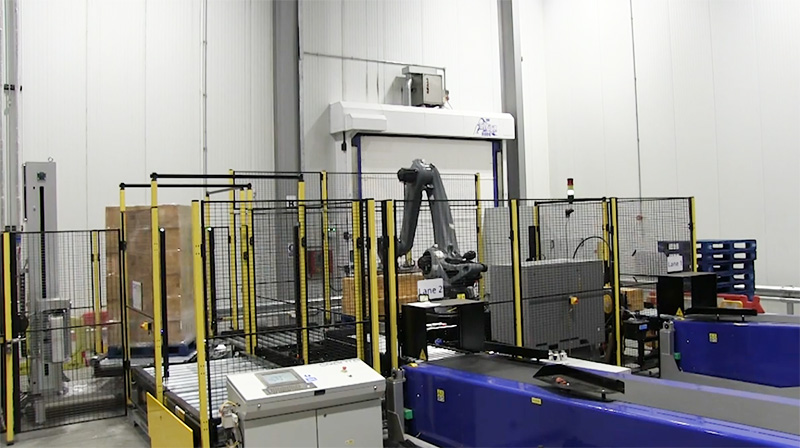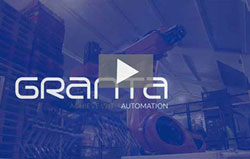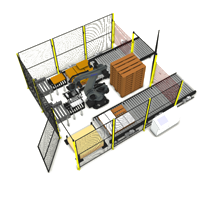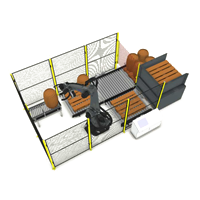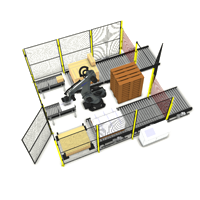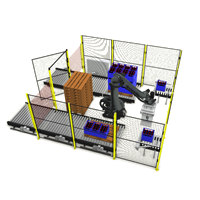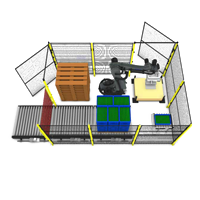In today’s ever competitive manufacturing and logistics sectors, the efficiency and reliability of palletising processes directly influence your bottom line, operational safety, and overall supply chain resilience. At Granta Automation, we know that the choice between manual and automated palletising isn’t merely a question of upfront investment—it’s a strategic decision that impacts your long-term productivity, workforce wellbeing, and business scalability.
The Hidden, Often Overlooked Costs of Manual Palletising
While manual palletising is still widespread across many industries, largely due to its lower initial capital requirements and perceived operational flexibility, these short-term savings often conceal significant and escalating hidden costs:
1. Escalating Labour Expenses:
Manual palletising requires a consistent workforce, often involving physically demanding tasks that can lead to fatigue and injury. With the UK’s National Living Wage increase to £12.21 per hour for workers aged 21 and over, and £10.00 per hour for those aged 18 to 20, along with the recent increase in employers NICs, labour costs are rising significantly. This escalation in wages, coupled with overtime, training, and benefits, significantly increases operational expenses.
2. High Risk of Injury and Absenteeism:
Repetitive lifting, awkward postures, and strenuous manual handling dramatically increase the likelihood of musculoskeletal disorders and workplace injuries. According to the UK’s Health and Safety Executive (HSE), manual handling incidents cause thousands of lost workdays annually, leading to both productivity declines and increased compensation and insurance premiums.
3. Inconsistent Throughput and Quality:
Human operators, however skilled, are subject to fatigue and variability. This can lead to bottlenecks, inconsistent pallet quality, increased product damage, and downstream disruptions that negatively affect customer satisfaction and operational flow.
4. Limited Flexibility and Scalability:
Scaling manual operations in response to fluctuating demand is cumbersome and expensive. Hiring and training new workers or managing overtime leads to delays and ballooning operational costs that limit your competitiveness.
Automated Palletising: A Strategic Investment in Efficiency and Safety
Though automated palletising solutions often require a higher upfront capital investment, the long-term benefits and return on investment are compelling and measurable. Alternatively, you can hire a palletiser for as little as £2.19 per hour, providing a flexible and cost-effective option for businesses not yet ready to invest in full automation.
1. Significant Labour Cost Reduction:
Automation dramatically reduces the reliance on manual labour for palletising tasks. This not only cuts labour expenses but allows your workforce to be redeployed to higher-value roles, improving overall operational efficiency and employee satisfaction.
2. Enhanced Throughput and Consistency:
Automated palletisers run continuously and deliver uniform, high-quality pallet stacks at a steady, optimised pace. This consistency ensures smoother warehouse operations, reduces product damage, and improves fulfilment accuracy—key drivers of customer loyalty and reduced waste.
3. Improved Workplace Safety and Reduced Injury Costs:
By eliminating repetitive manual handling, automation lowers the risk of injury significantly. This translates into fewer lost workdays, lower insurance costs, and an overall healthier workforce, fostering a positive working environment and reducing costly absenteeism.
4. Scalable and Flexible Systems for Future Growth:
Granta Automation’s modular solutions can be easily adapted or expanded as your production needs evolve. This flexibility allows you to scale seamlessly without the delays, costs, and risks associated with labour fluctuations.
Total Cost of Ownership (TCO): Why Automation Pays Off
When evaluating palletising options, it’s critical to look beyond initial capital expenditure and consider the Total Cost of Ownership (TCO)—including labour, maintenance, downtime, safety-related costs, and lost productivity.
Automated palletising systems typically deliver a full return on investment within 18-24 months, driven by:
- Dramatic reductions in labour and overtime costs
- Increased throughput and efficiency
- Lower product damage and rework expenses
- Significant reductions in injury-related costs and downtime
In contrast, manual palletising operations face steadily rising costs as labour expenses increase and safety incidents accumulate.
Invest Today for a Safer, More Productive Tomorrow
While manual palletising may appear cost-effective at the outset, the cumulative costs of labour, injuries, inefficiencies, and scalability challenges add up quickly—often catching businesses off guard. Our advanced palletising solutions offer a robust business case by enhancing productivity, safety, and operational flexibility, ultimately driving long-term profitability and competitive advantage.
Investing in automation today is not just about keeping up with technology—it’s about future-proofing your operations in an increasingly complex and competitive market.
Contact us today for a quote on 01223 499488 or helpline@granta-automation.co.uk, and discover how automated palletising can revolutionise your production line.
Find out more…
- Grantas Portable Cobot Palletising System: High-Performance Automation That Moves With You
- Manual vs. Automatic Palletising: A Comprehensive Comparison
- Manufacturing Efficiency: Why Every Second (and Every Pound) Counts
- The Hidden Costs of Downtime in Food & Beverage Production
- How Robotic Palletisers Deliver Fast ROI for Manufacturers

